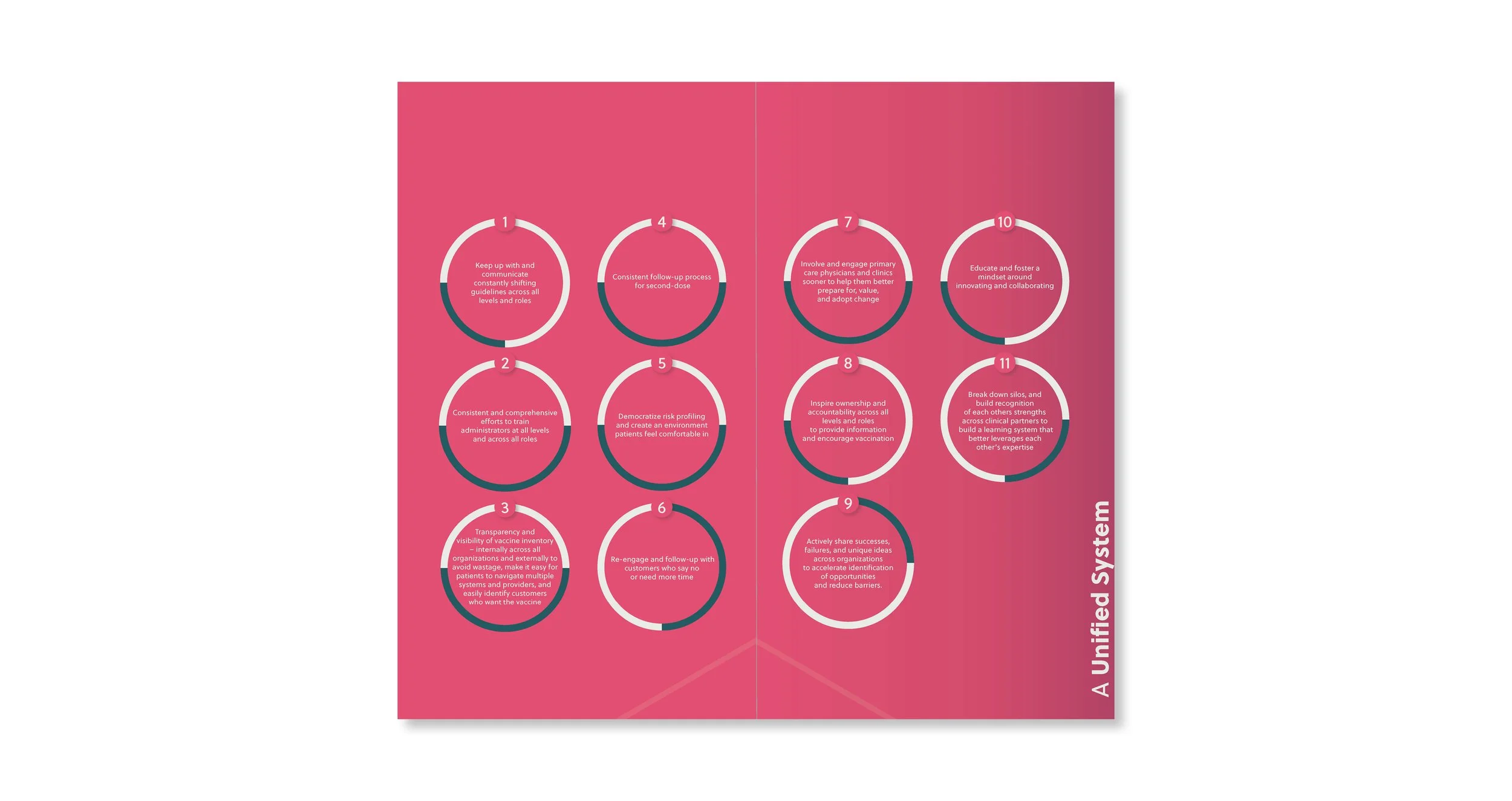Innovating Vaccination Strategies | Design Management Final Project | 10 Weeks | 2022
Enabling Innovation to Address Vaccine Hesitancy During a Pandemic
Systems Thinking | Interviews | Market Analysis | Causal Loop Diagrams | Data Visualization | Ecosystem Mapping | Business Model Generation | Prototyping | Driving Organizational Change and Innovation
The last three years have been unforgettable. And in an outstanding achievement, in less than a year, the first vaccine was approved. However, after observing the vaccine response around me, I started questioning the lack of consideration for the diffusion and adoption of vaccines in the rollout strategy. So, my quest to understand why the enormous number of partners involved, their access to a unique customer base, and the widespread access to vaccines had not yet translated to the results we wanted gave birth to my MA Final Project.
This project is a small contribution on my part that attempts to offer a system-centered and design management perspective on innovating a public health emergency response and demonstrates the value of design in this space.
Overview
Final Pitch Deck
Jump To
Approach
Though I have linearly presented this project, it was chaotic, messy, and non-linear. I frequently moved between researching, defining, testing, and developing throughout the project – ensuring that I was keeping up with updates in the continually changing news cycle, validating with subject matter experts, continuously learning, understanding from multiple perspectives, and questioning my own beliefs.
Vaccine hesitancy is not new and has existed since its inception in the 1700s. Vaccines have been one of the most outstanding achievements in the history of public health. They have helped eradicate diseases like smallpox and almost eliminated polio, measles, and Diptheria. However, each of them faced hurdles with acceptance.
Mass vaccination efforts face complex multi-factor challenges not only on the adoptee’s side but the various systems now expected to adapt and coordinate amidst uncertainty, little time, competing priorities, and sparse resources.
Primary Research
I initially started with parsing data based on the patient journey and by various organizations; however, I started noticing system-wide patterns and connections between the data.




After researching the best way to make sense of my affinitization, I came across causal loop diagrams.
It helped me understand the various dynamics of the system and the impact of how vaccination efforts are perceived, orchestrated, and delivered on increasing adoption.
Causal Loop Diagram
Whiteboarding and brainstorming helped clarify how I might simplify this to make it more digestible and clarify how the system impacts management, innovation, and adoption.
I also translated my insights to showcase adoptees moving through the system, highlight the front-end and back-end of the interaction with various stakeholders and showcase the critical innovation drivers impacted.
Insight Formation
The three opportunity buckets and eighteen innovation areas could be solved in multiple ways depending on the organization's structure, capabilities, processes, and infrastructure. E.g., some might need to optimize their current process to build capacity before actively designing interventions for addressing hesitancy. Keeping this in mind, I knew that the overall direction of the design should focus on revealing this innovation potential and provide stakeholders with a strategic way to move towards piloting these opportunities for innovating vaccination strategies.
Systemic diagrams, especially ones based on causal loop diagrams, can be overwhelming when thinking about how to prioritize and move forward. This is where integrating design management principles and tools helped me move through the challenge and think through how I might make this implementable in an organization.
An innovation toolkit based on systems thinking and design management to enable effective management and innovation of vaccination efforts in a way that acknowledges the complexity of interconnections within and across organizations and provides tools and methods to strategically prioritize and develop identified opportunities so that our health systems are better equipped to address vaccine hesitancy.
Reflection
This project was not only highly complex in terms of the topic addressed but also challenged me to appropriately integrate my existing knowledge from design management and service design while pushing me to learn more about complex systems and systemic change. From getting access to healthcare stakeholders to reflecting on my biases and assumptions, this project was a real test of translating theory to practical application despite unforeseen barriers. By the end, I have picked up valuable skills such as mapping complex information, going from insights to planning implementation, and bringing others along on this complex journey without overwhelming them.


















































































































































